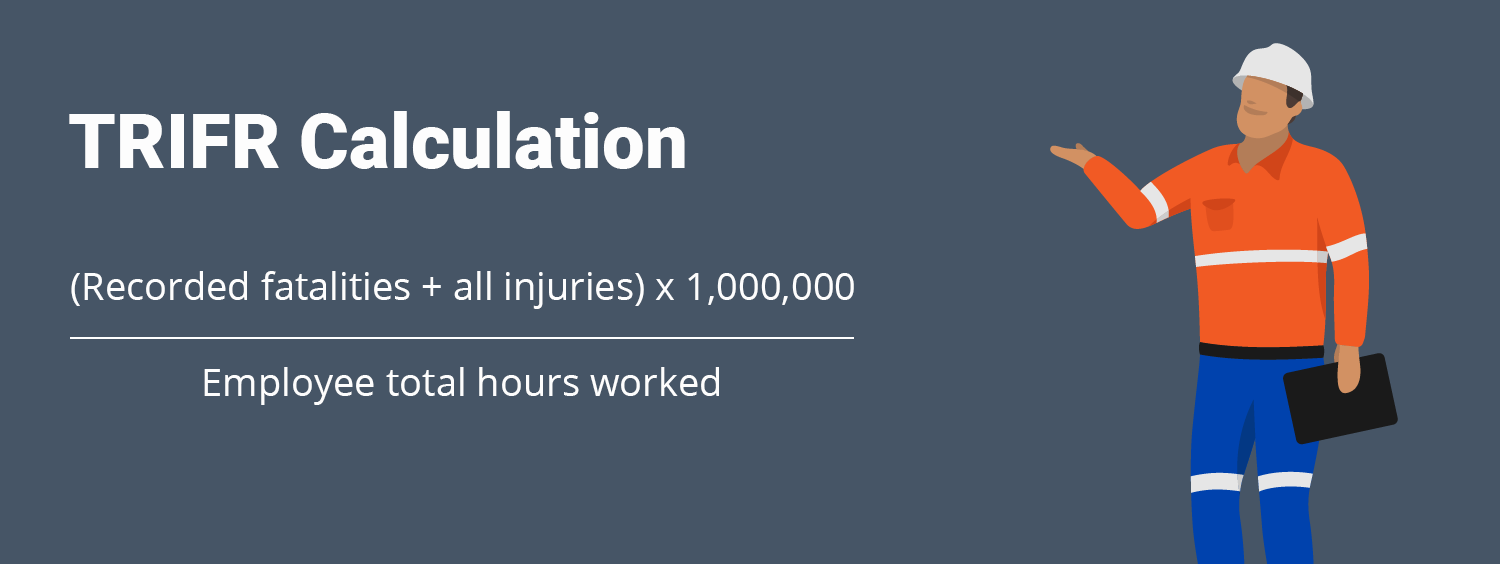Safety – TRIFR calculation

TRIFR Calculation: How to calculate total recordable injury frequency rate
TRIFR Calculation formula
The TRIFR calculation formula is an easy one. You are simply combining all of the recorded fatalities, lost time injuries, cases or alternate work and other injuries requiring medical treatment by a medical professional, multiplying that number by 1,000,000, and then dividing that single number by the total number of employee hours worked or 'manhours'.

Using this TRIFR calculation formula, the result is the total recordable injury frequency rate.
Some people confuse this formula with the formula for lost time injuries, but the total recordable injury frequency rate includes all injuries requiring medical treatment from a medical professional - which in theory means that it will be a larger number.
Because this calculation buckets a number of different incidents and safety outcomes, it's one of the more comprehensive and useful safety metrics.
What a real TRIFR calculation looks like
So what does a 'real-life' TRIFR calculation look like?
Let's say that company 'James Jones Construction' had:
- 1 fatality
- 2 LTI's
- 3 medical treatment injuries
And let's say that their workforce worked for a total of 200,000 hours over the course of this project. The resulting calculation would be:
(5 recorded 'injuries' x 1,000,000) / 200,000 hours = 25 injuries per million hours worked
This would be a pretty high TRIFR, as you can see some TRIFR averages here.
The easy part of TRIFR calculations, like all safety KPIs (see more here) is the measurement itself. The tricky part lies in getting accurate inputs and tracking these inputs over time.
How to better track and manage total injury frequency data
Good safety data like total recordable injury frequency rates have been buried in word docs, PDFs and spreadsheets for many years.
Companies have always been pretty good at documenting most major safety mishaps and incidents, but it's been in the management of this data that companies have really struggled - and where safety improvements have been stifled.
The main difficulty with measures like TRIFR is that they are largely management level statistics, and yet all of the data and information is collected directly on site.
So if a company doesn't have good pipes to feed all of this information through - or if workers fail to collect the data due to time and resource constraints amongst other things - then it's impossible to accurately measure TRIFR and plenty of other important safety numbers.
Luckily today, there are far better ways for companies to manage and collaborate on all of this information - most of which have been enabled through technology advances.
If you are interested in seeing how safety data can be better managed all the way through from the site to the office, then take a look at our dedicated safety tool Dashpivot.
It helps with TRIFR calculations, and those every day safety jobs as well.
People in 100+ countries use this safety management system to improve how they track, manage and improve their TRIFR and other safety metrics.
